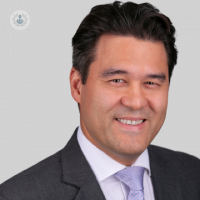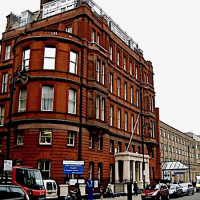Facial feminisation surgery
Mr Juling Ong - Plastic surgery
Created on: 04-28-2021
Updated on: 11-27-2023
Edited by: Conor Dunworth
What is facial feminisation surgery?
The term “facial feminisation surgery” is used to describe a series of cosmetic surgical interventions which involve both bone and cartilage reshaping as well as soft tissue procedures. The aim of facial feminisation surgery is to individually restructure various facial features which may be seen to have a more masculine appearance, in order to give the face a more typically feminine shape. While the parts of the face altered in facial feminisation surgery can vary, depending on each person’s original features and how they wish to look, alterations the hairline, forehead, nose, jaw and lips are most commonly included in this procedure.

Why is facial feminisation surgery performed?
While there is, of course, no such thing as a “male face”, the facial features mentioned above typically differ depending on gender. Because of this, facial feminisation surgery is often performed on assigned male at birth non-binary trans people and transgender women as part of gender reassignment procedures, as well as separately.
It’s also not uncommon for cisgender women to seek this type of surgery to alter any facial features that they may deem to have unwanted masculine qualities.
What does facial feminisation surgery involve?
The most common procedures included in this kind of surgery are:
- Brow lift- This consists of shaving down or removing parts of the brow bone to make it less prominent.
- Hairline alterations- Hair transplants are commonly performed on those who suffer from baldness or a receding hairline.
- Rhinoplasty- This involves removing cartilage and bone from the nose before reshaping it.
- Lip alterations- Lip lifts are often performed in order to reduce the distance between the top lip and the bottom of the nose. Lip fillers can also be used in some cases to give a fuller look.
- Jawline contouring- The length and fullness of the chin and jawbones are often reduced by shaving them down or removing parts.
Other procedures that may be included in this type of surgery include cheek implants, Adam’s apple reduction and neck lifts.
How to prepare for facial feminisation surgery
Preparation for this type of surgery is another aspect which depends on which procedures you choose to undergo, but in most cases, you will be asked to stop smoking at least 15 days before and stop taking any anti-inflammatory drugs or herbal supplements.
In some cases, you may also receive testing or a medical evaluation and be asked to take medication for a period of time beforehand.
Post-operative care
Recovery time is determined by which interventions are performed, but most patients are recommended two weeks of complete rest. The areas of the face that have been operated on will be sore and delicate, so it is recommended to touch these areas as little as possible and avoid chewing excessively. Where swelling is present, it is often recommended to sleep on two pillows in order to reduce the inflammation.






